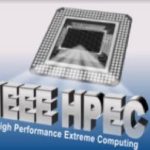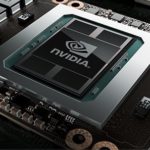In this podcast, Radio Free HPC looks at a Startup called Storj, which will pay you to use your excess data capacity as cloud-based storage based on Blockchain technology. “Our mission is to rethink cloud storage, to provide the security, privacy, and transparency it’s missing. That’s why we are building an open-source cloud platform, that aim to fundamentally change the way people and devices own data.”
Archives for February 2017
Call for Papers: EuroMPI/USA 2017 in Chicago
“EuroMPI/USA 2017 will continue to focus on not just MPI, but also extensions or alternative interfaces for high-performance homogeneous/heterogeneous/hybrid systems, benchmarks, tools, parallel I/O, fault tolerance, and parallel applications using MPI and other interfaces. Through the presentation of contributed papers, poster presentations and invited talks, attendees will have the opportunity to share ideas and experiences to contribute to the improvement and furthering of message-passing and related parallel programming paradigms.”
The REX Neo: An Energy Efficient New Processor Architecture
“With a team of four and less than $2 million, REX has taken a design concept to reality in under a year with a 16 core processor manufactured on a modern TSMC 28nm process node. With this test silicon, REX is breaking the traditional semiconductor industry idea that it takes large teams along with tens or even hundreds of millions of dollars to deliver a groundbreaking processor. This talk will feature an overview of the Neo ISA, microarchitecture review of the first test silicon, along with a live hardware/software demonstration.”
Call for Papers: HPEC 2017 in Waltham
The IEEE High Performance Extreme Computing Conference (HPEC 2017) has issued its Call for Papers. The conference takes place September 12-14 in Waltham, MA. “HPEC is the largest computing conference in New England and is the premier conference in the world on the convergence of High Performance and Embedded Computing. We are passionate about performance. Our community is interested in computing hardware, software, systems and applications where performance matters. We welcome experts and people who are new to the field.”
Podcast: Cybersecurity Challenges in a World of AI
“From home assistants like the Amazon Echo to Google’s self-driving cars, artificial intelligence is slowly creeping into our lives. These new technologies could be enormously beneficial, but they also offer hackers unique opportunities to harm us. For instance, a self-driving car isn’t just a robot—it’s also an internet-connected device, and may even have a cell phone number.”
Intel Skylake Comes to Google Cloud Platform
Today the Google Cloud Platform announced that it is the first cloud provider to offer the next generation Intel Xeon processor, codenamed Skylake. “Skylake includes Intel Advanced Vector Extensions (AVX-512), which make it ideal for scientific modeling, genomic research, 3D rendering, data analytics and engineering simulations. When compared to previous generations, Skylake’s AVX-512 doubles the floating-point performance for the heaviest calculations. In our own internal tests, it improved application performance by up to 30%.”
ADIOS 1.11 Middleware Moves I/O Framework from Research to Production
The Department of Energy’s Oak Ridge National Laboratory has announced the latest release of its Adaptable I/O System (ADIOS), a middleware that speeds up scientific simulations on parallel computing resources such as the laboratory’s Titan supercomputer by making input/output operations more efficient. “As we approach the exascale, there are many challenges for ADIOS and I/O in general,” said Scott Klasky, scientific data group leader in ORNL’s Computer Science and Mathematics Division. “We must reduce the amount of data being processed and program for new architectures. We also must make our I/O frameworks interoperable with one another, and version 1.11 is the first step in that direction.”
Artificial Intelligence: It’s No Longer Science Fiction
“Computational science has come a long way with machine learning (ML) and deep learning (DL) in just the last year. Leading centers of high-performance computing are making great strides in developing and running ML/DL workloads on their systems. Users and algorithm scientists are continuing to optimize their codes and techniques that run their algorithms, while system architects work out the challenges they still face on various system architectures. At SC16, I had the honor of hosting three of HPC’s thought leaders in a panel to get their ideas about the state of Artificial Intelligence (AI), today’s challenges with the technology, and where it’s going.”
Beyond the Moore’s Law Cliff: The Next 1000X
In this video from the 2017 HPC Advisory Council Stanford Conference, Subhasish Mitra from Stanford presents: Beyond the Moore’s Law Cliff: The Next 1000X. Professor Subhasish Mitra directs the Robust Systems Group in the Department of Electrical Engineering and the Department of Computer Science of Stanford University, where he is the Chambers Faculty Scholar of Engineering. Prior to joining Stanford, he was a Principal Engineer at Intel Corporation. He received Ph.D. in Electrical Engineering from Stanford University.
Job of the Week: GPU Performance Analysis Architect at Nvidia
Nvidia is seeking a GPU Performance Analysis Architect in our Job of the Week. “The NVIDIA GPU Compute Architecture group is seeking world-class architects to analyze processor and system architecture performance of full applications in machine learning, automotive, and high-performance computing. This position offers the opportunity to have a real impact on the hardware and software that underlies the most exciting trends in modern computing.”











